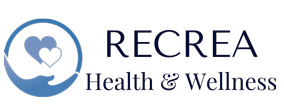Here Are Some Of The Best Foods To Avoid While Taking Semaglutide.
 While taking Semaglutide for weight loss, it’s essential to be mindful of your diet to ensure optimal results. Here are some general guidelines to follow when thinking “What foods should I avoid while taking Semaglutide?”
While taking Semaglutide for weight loss, it’s essential to be mindful of your diet to ensure optimal results. Here are some general guidelines to follow when thinking “What foods should I avoid while taking Semaglutide?”
1. High-Calorie and Processed Foods
Minimize intake of high-calorie and processed foods, such as sugary snacks, candies, and desserts. These can contribute to excessive calorie consumption and hinder weight loss efforts.
6 Examples of High-Calorie and Processed Foods
- Potato Chips: Fried and often loaded with salt and unhealthy fats.
- Sugary Cereals: Many breakfast cereals are high in sugar and lack nutritional value.
- Candy Bars: Packed with sugar, saturated fats, and often low in nutrients.
- Fast Food Burgers: High in calories, saturated fats, and often loaded with additives.
- Soda: Sugary drinks contribute to empty calories and can lead to weight gain.
- Frozen Pizza: Typically high in calories, saturated fats, and sodium.
2. High-Fat Foods
Reduce the consumption of high-fat foods, especially those high in saturated and trans fats. Opt for healthier fats found in avocados, nuts, and olive oil in moderation.
6 Examples of High-Fat Foods
- Processed Meats: Sausages, hot dogs, and bacon are often high in saturated fats.
- Deep-Fried Foods: Fried chicken, french fries, and fried snacks can be high in trans fats.
- Commercial Baked Goods: Many commercially baked items like cakes, pastries, and cookies often contain trans fats.
- Margarine: Some margarines can be high in trans fats, although many have been reformulated to reduce or eliminate them.
- Pre-Packaged Snacks: Certain pre-packaged snacks, such as microwave popcorn and certain crackers, may contain trans fats for extended shelf life.
- Commercially Prepared Desserts: Packaged cakes, pies, and other desserts often contain both saturated and trans fats to enhance flavor and texture.
3. Sugary Beverages
Avoid sugary drinks like sodas, fruit juices, and sweetened beverages. Opt for water, herbal teas, or other low-calorie, sugar-free options to stay hydrated.
6 Examples of High-Fat Foods
- Soda: Regular carbonated soft drinks are often loaded with added sugars.
- Fruit Juices: Some fruit juices, especially those not labeled as 100% juice, can contain added sugars.
- Energy Drinks: These beverages often contain high levels of sugar along with caffeine and other stimulants.
- Sweetened Iced Tea: Bottled or pre-packaged iced teas can have added sugars for flavor.
- Flavored Water: Some flavored waters can be high in sugars, especially those labeled as “enhanced” or “sweetened.”
- Flavored Milk: Some commercially flavored milk products can have added sugars.
4. Highly Processed Carbohydrates
Limit the intake of refined and highly processed carbohydrates, including white bread, pastries, and sugary cereals. Choose whole grains, fruits, and vegetables for better nutritional value.
6 Examples of Highly Processed Carbohydrates
- White Bread: Refined and processed, stripped of most nutrients found in whole grains.
- Instant Noodles: Typically made from refined flour and often contain additives.
- Cakes and Pastries: Baked goods made with refined flour, sugars, and often unhealthy fats.
- Sugary Breakfast Cereals: Many cereals are highly processed, high in sugar, and low in nutrients.
- Sugary Granola Bars: Some granola bars can be high in added sugars and processed grains.
- Instant Oatmeal: Flavored or pre-packaged instant oatmeal can have added sugars and lack the fiber found in whole oats.
5. Excessive Alcohol
While moderate alcohol consumption may be acceptable, excessive alcohol intake can contribute to extra calories and may interfere with weight loss goals.
6 Examples of Alcohol
- Beer: One of the oldest and most widely consumed alcoholic drinks, typically made from fermented grains.
- Wine: Produced by fermenting grapes or other fruits, available in various types such as red, white, and rosé.
- Vodka: A distilled spirit typically made from grains or potatoes and known for its neutral flavor.
- Whiskey: Distilled from fermented grain mash and aged in wooden casks, resulting in a variety of styles like bourbon and Scotch.
- Tequila: Made from the fermented juice of the blue agave plant, primarily produced in Mexico.
- Gin: A distilled spirit flavored with botanicals, including juniper berries.
6. High-Sodium Foods
Limit foods high in sodium, as excessive salt intake can lead to water retention and bloating. Opt for fresh, whole foods and use herbs and spices for flavoring.
6 High-Sodium Foods
- Processed Meats: Deli meats, bacon, and sausages can be high in sodium for flavor and preservation.
- Canned Soups: Many commercially available soups contain high levels of sodium for taste and shelf life.
- Frozen Dinners: Convenience meals can be high in sodium as a preservative and flavor enhancer.
- Snack Foods: Potato chips, pretzels, and other snacks can be high in sodium as a flavoring agent.
- Instant Noodles: Often packed with sodium in the seasoning packets.
- Soy Sauce: A popular condiment that can contribute significant sodium to dishes.
In Conclusion
Remember, it’s crucial to consult with your healthcare provider or a registered dietitian for personalized dietary advice based on your individual health needs and goals. They can provide tailored recommendations to complement your Semaglutide treatment and support your weight loss journey. Hopefully this resources has answer the question “What Foods Should I Avoid When Taking Semaglutide?”
